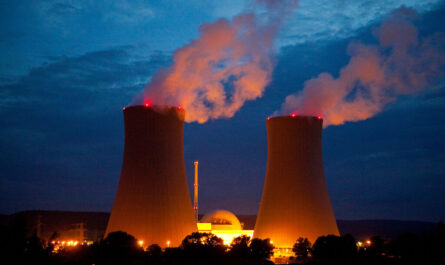
Introduction to CNG Compressors
Compressed Natural Gas (CNG) has emerged as one of the most viable and environment friendly fuel across the world. CNG is considered to be an efficient substitute to diesel and petrol due to its lower cost and negligible emissions. With more number of vehicles being converted to CNG, the demand for CNG compressors has also increased manifold in the past decade.
Types of CNG Compressors
There are mainly three types of compressors used in CNG dispensing and storage systems:
Reciprocating Compressors
Reciprocating compressors are most commonly used for CNG compression duties involving medium to high pressures up to 3000 psi. They are simple in design with movable pistons compressing the gas in cylinders. These compressors offer reliable performance and are suitable for both stationary as well as vehicle mounted applications. Their maintenance is also low as they have few moving parts.
Screw Compressors
Screw compressors employ a twin-screw mechanism with one screw firmly in place and another revolving screw meshing with it to progressively compress the gas. They are suitable for higher pressure applications above 3000 psi. Compared to reciprocating compressors, screw compressors have higher efficiencies and flow rates but are more expensive. They find applications in large CNG dispensing as well as storage stations.
Centrifugal Compressors
Centrifugal compressors use rapidly rotating impellers to impart centrifugal force on the gas, compressing it as it travels outward. They are generally used for high pressure CNG transmission in pipelines or storage in ASME containers. These compressors provide continuous compression of large volumes of gas but their construction cost is very high.
How CNG compressors work?
The basic components and working of a typical reciprocating compressor for CNG applications is explained below:
– Cylinder: The cylinder houses the crankshaft and piston assembly where compression of gas takes place. It is made of thick cast iron or steel for withstanding high pressures.
– Piston: Connected to the crankshaft via connecting rod, the piston compresses the gas as it moves up and down inside the cylinder bore. Modern pistons have highly polished surfaces and resilient rings for minimum leakages.
– Crankshaft: Rotated by an electric motor or engine, the crankshaft imparts reciprocating motion to the piston through connecting rods. It converts rotary motion to linear motion for compression.
– Intake and Discharge valves: One-way inlet and outlet valves ensure gas enters from intake and exits to discharge when pressure increases inside cylinder.
– Coolers: Inter-stage coolers cool the compressed gas between compression stages, maintaining moderate temperatures.
– Lubrication system: Oil is pumped to crankshaft, cylinder walls for minimizing friction and wear during compression strokes.
As gas enters through inlet, the downward piston stroke reduces the volume and pressure builds up. On upward stroke, hot gas escapes through discharge valve to the discharge collection line at high pressure. This cycle compressors the gas to desired pressures in single or multiple stages.
Applications of CNG compressors
Based on the type, CNG compressors widely serve following key applications:
Vehicle fueling stations: At CNG stations, high flow reciprocating compressors boost pressures up to 5000+ psi for faster vehicle fillings.
CNG pipeline transmission: Large screw/centrifugal compressors at source maintain line pressures over thousands of kilometers in transmission pipelines.
Industrial and commercial uses: Many industries like glass, ceramics use CNG compressors for thermal processes due to lower energy costs and emissions.
Home refueling: Small single-cylinder reciprocating compressors allow refueling of private CNG vehicles from household connections.
Automotive uses: Small reciprocating compressors on-board vehicles help storage of CNG in high-pressure tubular tanks for longer ranges.
Challenges in CNG compression
Major issues faced during CNG compression involve higher maintenance costs, leakage concerns, and lowering efficiencies:
– Piston blow-by: Wear and tear causes gases to leak past rings and valves, reducing efficiencies over time.
– Lubrication control: Proper oil injection and control is necessary to minimize dilution of CNG with lube oil.
– Multi-stage designs: Increased number of stages adds to capital costs but helps achieve very high pressures of 21,000+ psi.
– Heat management: Removing heat between each stage and during transmission maintains gas temperatures under 120°C.
– Material durability: Corrosion resistant alloys needed for withstanding highly abrasive CNG without failures.
On addressing such challenges through innovative designs, materials and advanced control systems, CNG compressors play a vital role in furthering the green fuel revolution worldwide.
*Note:
- Source: Coherent Market Insights, Public sources, Desk research
- We have leveraged AI tools to mine information and compile it


